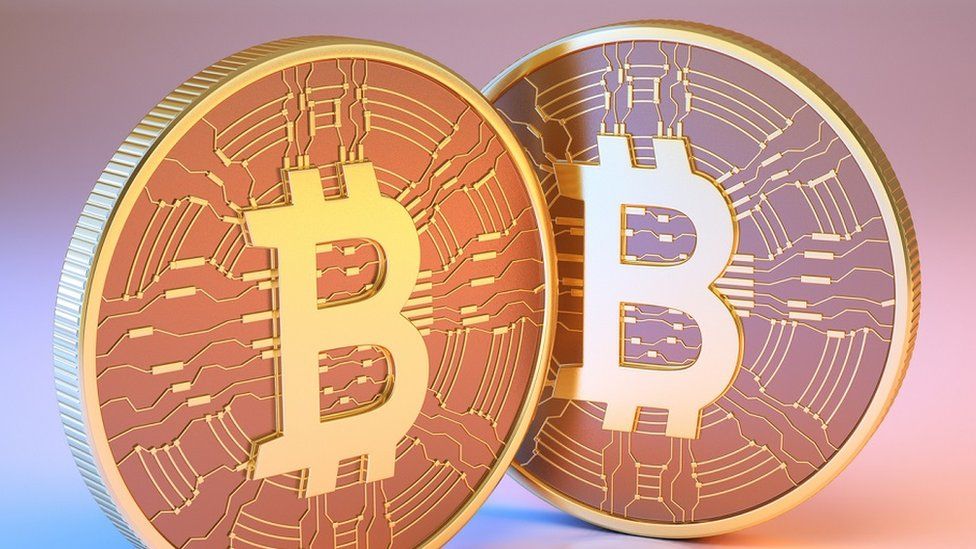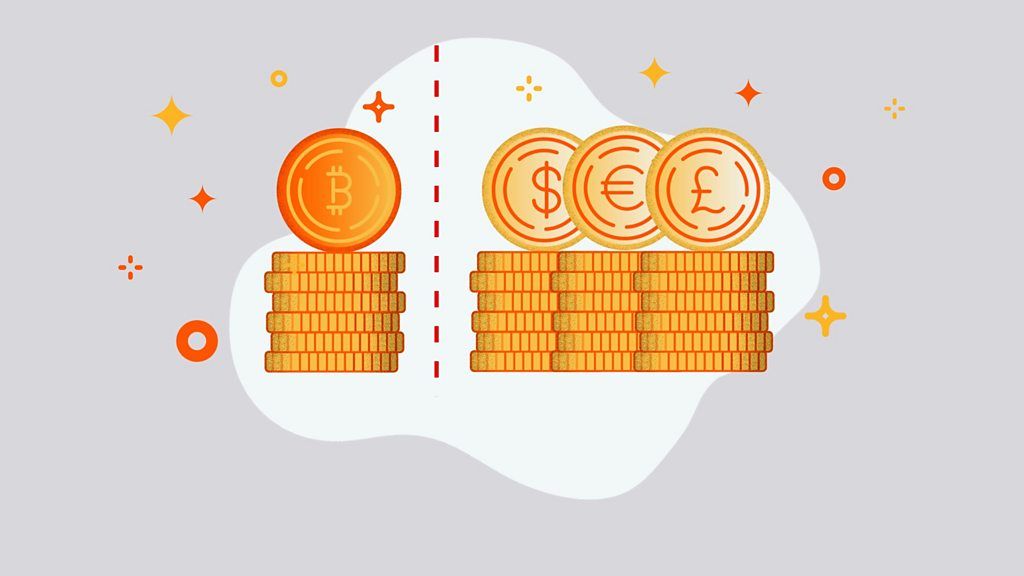What is Bitcoin? Key crypto terms and what they mean


Investors’ hopes that the price of Bitcoin could return to an all-time high in 2024 have thrust the sticky subject of cryptocurrencies back into the spotlight.
But key terms associated with crypto such as blockchains, wallets – and more recently spot ETFs – remain something of a mystery for many.
But worry not. If you’re hearing these for the first time, or just need a refresher, here are a few key words and what they mean.
Bitcoin
While many may struggle with the finer points of crypto, pretty much everyone has heard of its most famous product: Bitcoin. But what actually is it?
Bitcoin is a cryptocurrency, which is to say a type of digital currency. Unlike traditional currencies – the dollar or pound, for example – Bitcoin is not backed or controlled by centralised financial institutions. This makes it popular for people who think decentralisation can bring financial freedom, but it also makes it extremely volatile – rising and falling in value at the whim of Bitcoin buyers and sellers.
In February 2024, its price has been rising rapidly – great news for those who have Bitcoin. But it is not so long since it plummeted – a pattern which has been repeated multiple times since the cryptocurrency was launched.
Blockchain
Blockchain is the technology underpinning all cryptocurrencies, and many related products like non fungible tokens (NFTs). In essence, it is a virtual spreadsheet on which all the buying and selling of crypto is recorded. They are arranged in blocks linked together in a giant chain – hence the name.
Every cryptocurrency transaction is individually recorded onto the blockchain by a huge network of volunteers verifying its authenticity by using computer programmes. The incentive to do this for Bitcoin’s network is that the first person to validate transactions is rewarded in Bitcoin. This potentially lucrative process, known as mining, is also controversial because of the incredible amount of energy used as people the world over race to be the first to successfully update the blockchain.
This also brings us on to “halving”. The amount of Bitcoins that can be mined is capped at 21 million. And most of them are already in circulation. But roughly every four years, the number of Bitcoins rewarded to those who successfully create new blocks of the cryptocurrency is cut in half. The next Bitcoin “halving” event is expected to take place in spring 2024.
This video can not be played
To play this video you need to enable JavaScript in your browser.
Exchange-traded funds (ETFs)
ETFs are portfolios that let investors bet on multiple assets without having to buy any themselves. Traded on stock exchanges like shares, their value depends on how the overall portfolio performs in real time. They can comprise a combination of gold and silver bullion, for example, or a mix of shares in both technology and insurance companies.
A spot Bitcoin ETF buys the cryptocurrency directly, “on the spot”, at its current price, throughout the day. While some ETFs already contained Bitcoin indirectly, the US approved several spot Bitcoin ETFs in January 2024. This allowed new investors, such as investment management firms like Blackrock and Fidelity, to enter the speculative world of Bitcoin without having to worry about digital wallets or navigating crypto exchanges.
Crypto Exchange
A crypto exchange is the digital platform where investors can buy, sell and trade cryptocurrencies. Similar to traditional investing, a crypto exchange acts as a brokerage where people can transfer traditional money, like pounds or dollars, from their banks into cryptocurrencies like Bitcoin or Ethereum. Most transactions are accompanied by fees.
Crypto Wallet
A crypto wallet is a place where investors hold their cryptocurrency. It stores the virtual assets much like a traditional wallet holds cash. There are two types, a hot wallet and a cold wallet. Hot wallets are connected to the internet, and thus more accessible for quick transfers and easy access. Cold wallets are physical devices like specially designed USBs that store crypto offline typically for safer and longer term storage.
Ethereum
Ethereum is used to describe both the second largest cryptocurrency after Bitcoin, represented by the Ether token, and the blockchain underpinning it. This supports an array of different applications and digital assets, such as non-fungible tokens. It functions in a similar way to Bitcoin and other cryptocurrencies, but in 2022 switched to a greener operating system requiring less computers and energy.
Related Topics
-
-
10 January

-
-
-
13 December 2022

-

